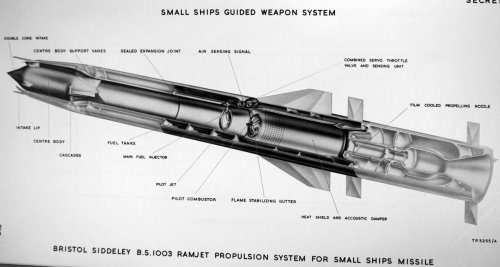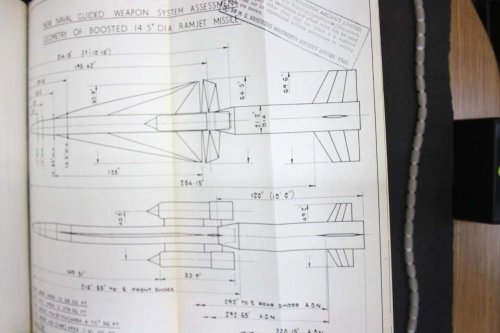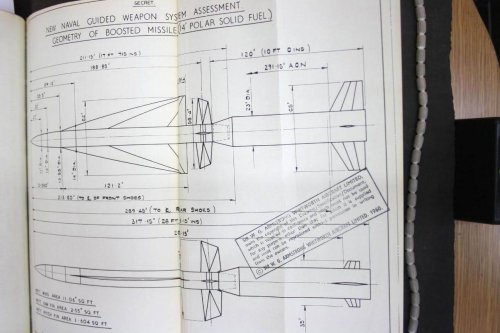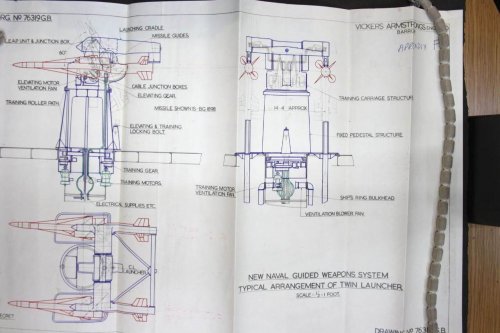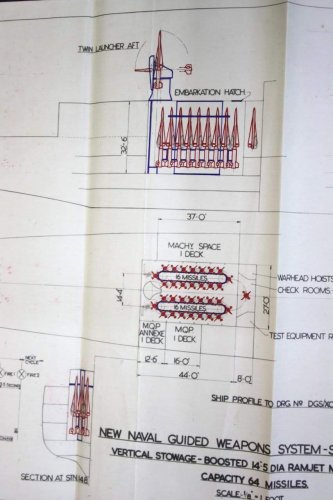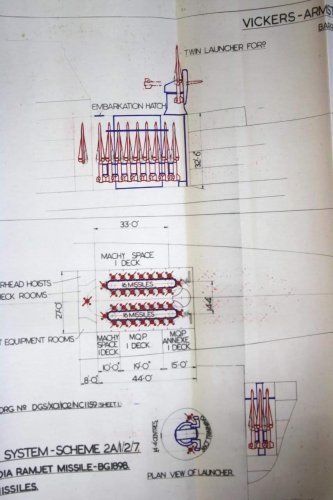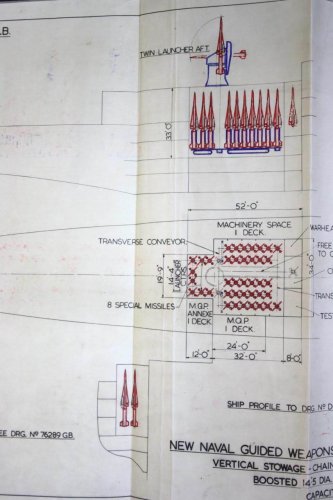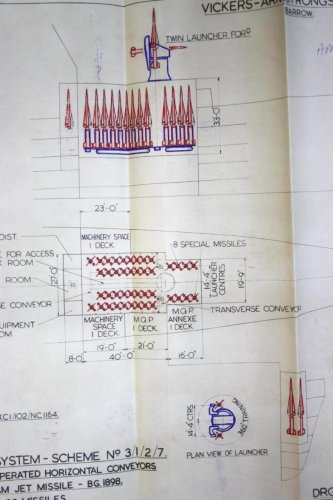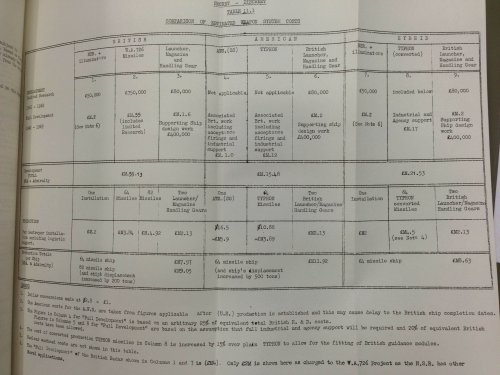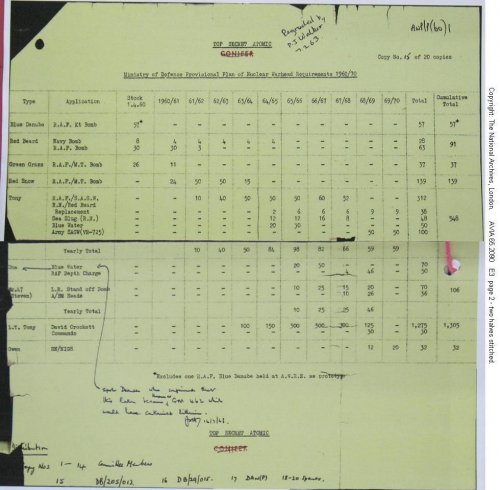Minutes of 1st Meeting of Admiralty/ Ministry of Aviation Working Party, 27/2/59
Four 20ft square arrays of very high power. 125nm range on a 1m sq target at 60-70° angle of sight.
Minutes of 4th Meeting of Joint Admiralty/ Ministry of Aviation Working Party
6,000 ton ship, 40-50x missiles. Loading blast doors probably to withstand 100 tons loading. No high rate of fire from two launchers aft, restricted to 45° either side of beam, could use VLS but requires a much bigger ship.
Single-barrel horizontal loaded launcher best on weight, 20 sec firing interval. Four illuminators, three a minimum requirement.
Question on separate LA & HA launchers.
No ship study yet but roughly 8,000 tons and 30 feet longer than County, if no guns fitted 6-7,000 tons with two launchers.
Minutes of 6th Meeting of Admiralty/ Ministry of Aviation Working Party, 16/11/59
Destroyer, 6,000 tons (possibly as small as 3,000 tons), no guns.
ASWE Small Ship Surveillance Radar – scaled down NIGS four aerial fixed arrays, less performance, no full use of 50+ mile NIGS radar, especially in ECM conditions.
Minutes of 7th Meeting of Admiralty/ Ministry of Aviation Working Party, 14/12/59
Four arrays on a 6,000 ton hull. NSR [New Surveillance Radar] is scaled down NIGS four-array radar.
Minutes of 8th Meeting of Admiralty/ Ministry of Aviation Working Party, 22/2/60
ASWE – radar seems to be a fixed aerial frequency scan radar with integrated guidance facilities.
N.I.G. 108 – Statement on June 1960 Visit to USA
SPG-59 (small version) has 3,400 radiating elements, 296kW mean power but used for illumination too which means power is greater than 96kW. Total power required 2.5MW. UK system has 5kW mean power with four dishes.
Joint Admiralty/ Ministry of Aviation Working Party Report September 1960
Range now 150 miles, weight 3,500lbs; cost of development now reduced to £60mil from £90mil.
Minutes of 12th Meeting of Admiralty/ Ministry of Aviation Working Party
ASWE – 600-800kW power required for radar installation, should ask for 1MW. Scaled down US Advance Weapon System requires 2.5MW and would need complete hull redesign which is not possible in the timescale.
NIG Systems: homing head can deal with smaller targets than US Scaled System which uses DIRCOL system, and NIGS requires less powerful illuminators.
Pencil-beam homing RANTEC aerial in Tartar flown, could replace dish antenna.
Radar not yet selected, F.S.R. or less ambitious “fan-beam” type.

